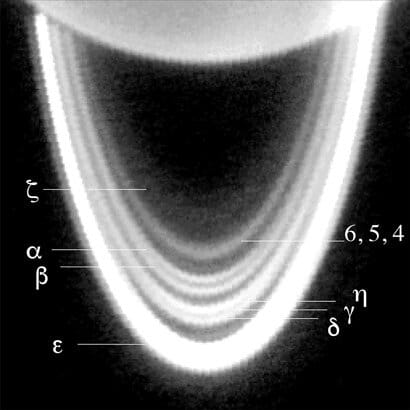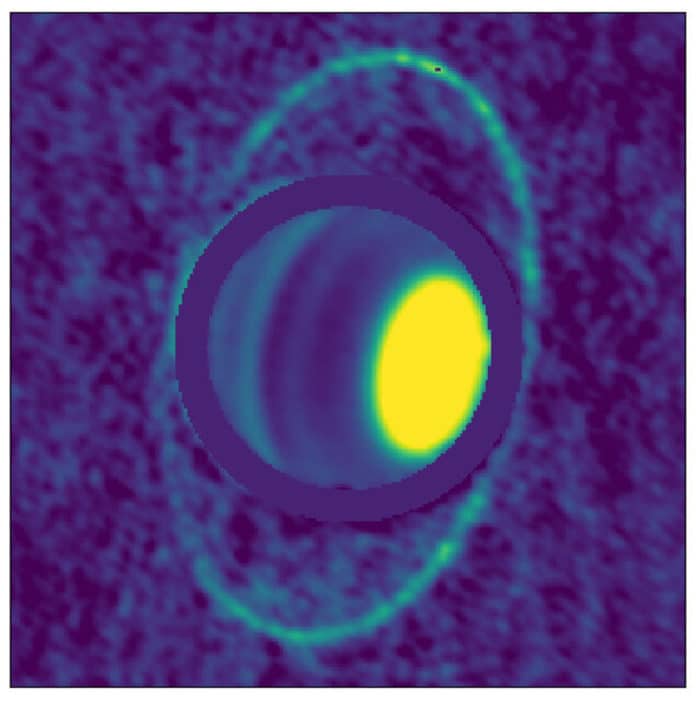The rings of Uranus were first discovered in 1977 by the astronomical team of James L. Elliot, Edward W. Dunham, and Douglas J. Mink. When he first discovered Uranus more than 200 years ago, William Herschel also reported seeing rings, but that’s probably impossible because the rings of Uranus are very dark and thin.
In contrast to the rings of Saturn, which are exceptionally bright and made out of water ice, the rings of Uranus are generally dark. Rather than containing dust, the rings appear to be comprised of larger chunks, estimating 0.2 to 20m over.
Now, in the new images captured by the Atacama Large Millimeter/submillimeter Array (ALMA) and the Very Large Telescope (VLT), the rings appeared surprisingly bright. What’s more, scientists also measured the temperature of the rings: a cool 77 Kelvin, or 77 degrees above absolute zero.
The observations additionally affirm that Uranus’ brightest and densest ring, called the epsilon ring, contrasts from the other known ring systems, particularly the rings of the Saturn.

Imke de Pater, a UC Berkeley professor of astronomy said, “Saturn’s mainly icy rings are broad, bright and have a range of particle sizes, from micron-sized dust in the innermost D ring to tens of meters in size in the main rings. The small end is missing in the main rings of Uranus; the brightest ring, epsilon, is composed of golf ball-sized and larger rocks.”
“By comparison, Jupiter’s rings contain mostly small, micron-sized particles (a micron is a thousandth of a millimeter). Neptune‘s rings are also mostly dust, and even Uranus has broadsheets of dust between its narrow main rings.”
Graduate student Edward Molter said, “We already know that the epsilon ring is a bit weird because we don’t see the smaller stuff. Something has been sweeping the smaller stuff out, or it’s all glomming together. We just don’t know. This is a step toward understanding their composition and whether all of the rings came from the same source material, or are different for each ring.”
“The rings of Uranus are compositionally different from Saturn’s main ring, in the sense that in optical and infrared, the albedo is much lower: they are really dark, like charcoal. They are also extremely narrow compared to the rings of Saturn. The widest, the epsilon ring, varies from 20 to 100 kilometers wide, whereas Saturn’s are 100’s or tens of thousands of kilometers wide.”
Uranus has 13 distinct rings with some bands of dust between them. The rings contrast in different ways from those of Saturn.
Molter said, “It’s cool that we can even do this with the instruments we have. I was just trying to image the planet as best I could and I saw the rings. It was amazing.”
Leigh Fletcher from the University of Leicester in the United Kingdom led the VLT observations said, “We were astonished to see the rings jump out clearly when we reduced the data for the first time.”
The new data were published this week in The Astronomical Journal. De Pater and Molter led the ALMA observations, while Michael Roman and Leigh Fletcher from the University of Leicester in the United Kingdom led the VLT observations.
